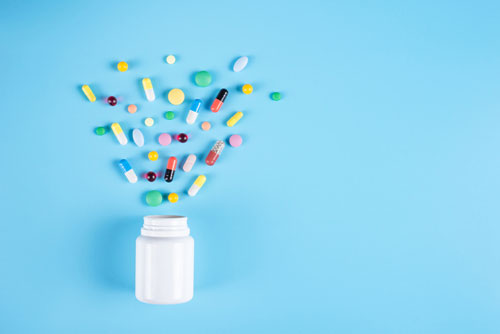The testing process for new drugs is straightforward…
One group of patients takes the drug. Another takes a placebo. If the group taking the drug improves more than those taking a placebo, the drug may be approved for sale by the FDA.
Here’s the problem…
In the real world, people often take multiple drugs. One survey found that, on average, 45-year-olds take four different prescription drugs every day. Another study found that people over 65 take an average of 15 different prescription medications a year.
Drug trials typically don’t test medications to find out if they are safe to take in combination with other drugs.
Only after a drug is already on the market do we find out if it is compatible with others. Patients unknowingly end up as human guinea pigs.
Perhaps the most tragic example was a blood pressure drug called Posicor.
The drug was approved by the FDA, despite studies showing it could pose a severe risk of adverse interactions. It turned out Posicor was potentially deadly when combined with any of 25 different drugs. It was pulled from the market after being linked to 123 deaths.[i] [ii]
Top 10 Most Dangerous Prescription Drug Combinations
If you take more than one prescription drug, you need to know if they play well together. Here are 10 of the most dangerous combinations, according to Pharmacy Times.[iii]
- Fluoxetine and Phenelzine. Both drugs are used to treat depression. Together they can cause central serotonin syndrome. Symptoms include agitation, rapid heartbeat, and excessive sweating. It can be fatal.
- Digoxin and Quinidine can lead to nausea, vomiting, and death. Digoxin is used for heart failure. Quinidine treats irregular heartbeat. For some patients, this drug combination is necessary, but they must be closely watched.
- Sildenafil and Isosorbide Mononitrate. Sildenafil, also known as Viagra, can dangerously increase the blood pressure-lowering effects of isosorbide mononitrate, which treats angina pain. There have been 123 deaths from this interaction since 1998.
- Potassium Chloride and Spironolactone. Both drugs are used to increase potassium levels in people with heart failure, cirrhosis of the liver, or kidney disease. Together, these drugs can boost potassium to dangerously high levels. People with kidney impairment are especially susceptible.
- Clonidine and Propranolol are both used to lower high blood pressure. But when taken together they can do the opposite, causing blood pressure to dangerously spike. Also, suddenly quitting clonidine while still using propranolol can raise blood pressure to lethal levels.
- Warfarin and Diflunisal. Warfarin (Coumadin) is a blood thinner. Diflunisal is a pain reliever. Together they can lead to fatal intestinal bleeding.
- Theophylline and Ciprofloxacin. Ciptofloxacin is an antibiotic that can raise theophylline, an asthma drug, to toxic levels. Symptoms include headache, dizziness, low blood pressure, hallucinations, rapid heartbeat, and seizures.
- Pimozide and Ketoconazole. Pimozide treats Tourette’s syndrome. Ketoconazole treats fungal infections. When taken together, they can cause dangerous heart arrhythmia.
- Methotrexate and Probenecid. The first treats rheumatoid arthritis, the second, gout. Together they can lead to a fatal overdose of probenecid. Symptoms include diarrhea, vomiting, excessive sweating, and kidney failure.
- Bromocriptine and Pseudoephedrine. Bromocriptine is prescribed to women with menstrual problems and to men to boost fertility. When taken with the decongestant pseudoephedrine (Sudafed), they can lead to severe narrowing of blood vessels, rapid heartbeat, seizures, and death.
Don’t play Russian roulette with your medications. Whenever your doctor starts you on a new prescription, always make a point of asking how it might interact with other drugs you’re taking. And double-check with your pharmacist.
Editor’s Note: Unlike much of the mainstream media, we don’t accept advertising from Big Pharma. That’s why you can count on us for unbiased medical information. Our only motivation is your good health. Subscribe to our newsletter, Independent Healing. Each month it brings you important health news you won’t find anywhere else. To subscribe, go HERE.
Related Articles
The Hidden Danger of Anti-Inflammatory Drugs
Prescription Drugs Are Now the 4th Leading Cause of
DeathCommon Antidepressant Drugs Linked to
Dementia
Like this Article? Forward this article here or Share on Facebook.
[i]https://www.richardsonlawfirmpc.com/blog/2016/february/5-of-the-most-dangerous-recalled-drugs-in-histor/
[ii]https://www.latimes.com/nation/la-122001posicor-story.html
[iii]https://www.pharmacytimes.com/publications/issue/2002/2002-11/2002-11-7010

